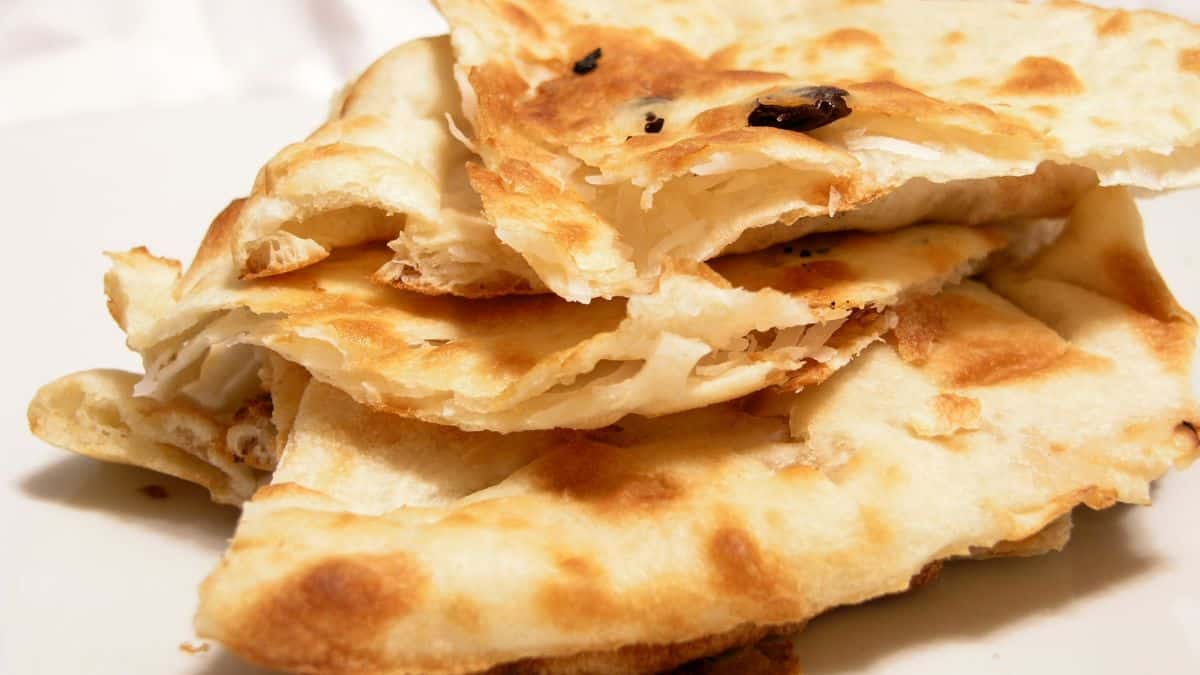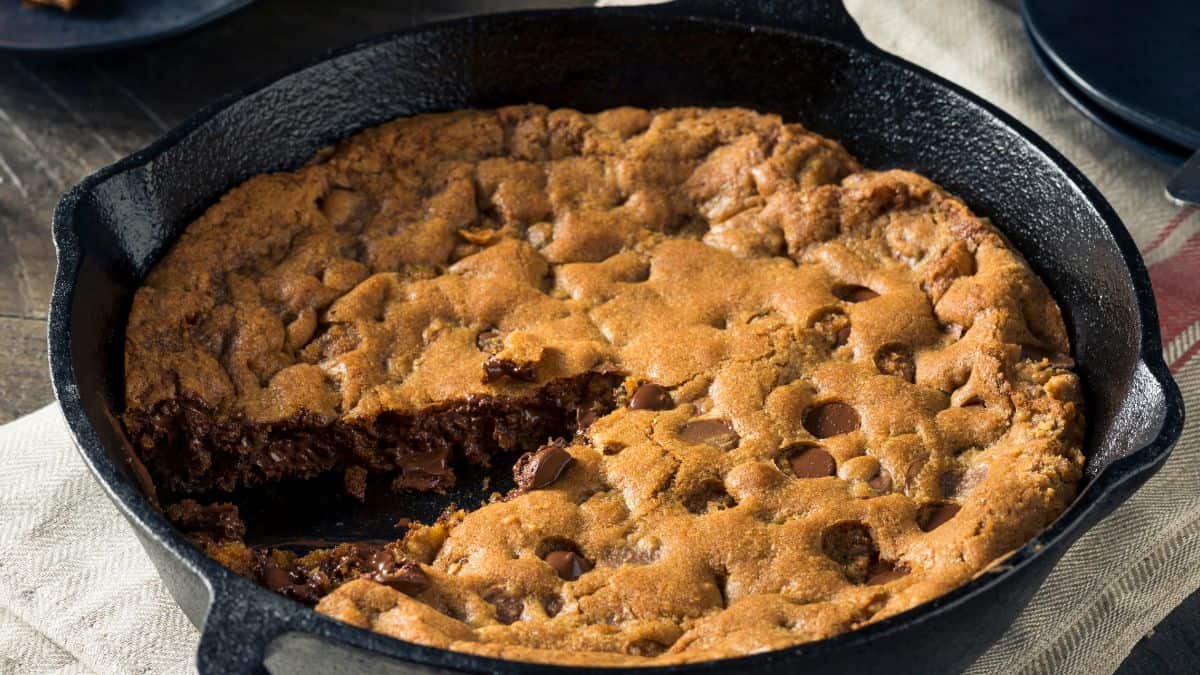Can You Bake Bread on a Pizza Stone? A Guide for Home Bakers
I see you there, staring at that pizza stone collecting dust between pizza nights. What if I told you that your treasured slab of cordierite or ceramic isn’t just a one-hit wonder for your weekend Margheritas? That’s right, your pizza stone has been hiding a double life, moonlighting as a bakery-grade bread oven base just waiting for its moment in the spotlight.
Picture a loaf with a crispy exterior that shatters delightfully upon impact, and a moist, airy crumb that elevates your humble sandwich or morning toast into a Michelin-star affair.
Look, if you’ve been keeping your pizza stone and your loaf pan in separate corners of your kitchen, it’s time for a culinary truce. Stick around, and I’ll guide you through the essentials and nifty tricks to transform your pizza stone into the foundation of your very own in-home bakery.
Get ready to don your dual-title of home pizzaiolo and artisanal baker; you’re about to make your kitchen the heart and soul of comfort food.

Benefits of Using a Pizza Stone for Bread Baking
Using a pizza stone for baking bread has some fantastic benefits that’ll make your homemade loaves even more mouth-watering.
Even heat distribution is the pizza stone’s MVP quality. Made from a mineral compound called cordierite, the stone absorbs and holds onto heat, transferring it evenly to your dough as it bakes. This proper heat distribution results in beautifully browned and evenly cooked bread, be it a single large loaf or smaller rolls.
Oven spring will leave you in awe when you use a pizza stone. As dough tends to expand quickly right after it enters the oven, a preheated stone provides the high temperatures needed for that sought-after oven spring effect. The result? Your bread comes out looking marvelous and professional, with that irresistible crust.
Speaking of the crust, using a pizza stone produces a delightfully crispy finish. How? Well, the stone absorbs moisture from the dough, ensuring that the crust achieves bakery-level crispiness. Your taste buds will thank you, especially if you’re a crispy crust lover.
When it comes to versatility, a pizza stone has got your back too. Whether you’re using a bread machine or baking up a few buns using your oven, your trusty pizza stone offers adaptability to cater to your preferences. And yes, making pizza is still very much possible and equally scrumptious.
Getting Your Dough Ready

Before you start baking bread on a pizza stone, it’s crucial to get your dough ready properly. Whether you’re working with a classic bread dough or a tangy sourdough, follow these simple steps to prepare your dough for baking.
- Combine your flour, yeast, and salt in a large mixing bowl. If you’re making sourdough, don’t forget to add your starter!
- Gradually add warm water to the mixture while stirring to form a slightly sticky dough. The warm water not only activates the yeast, but also helps in creating a smooth dough.
- Once you’ve made your dough, let it rise. Cover the bowl with a damp cloth and place it in a warm spot for about an hour or until the dough has doubled in size. Patience is key here, as giving the dough enough time to rise results in a fluffy, flavorful loaf.
- After your dough has risen, it’s time to deflate it gently, just enough to remove the air bubbles. Shape the dough into a round or oval loaf, or whatever form you’d like your bread to take. As the dough rests, it will continue to rise slightly, so give it another 20 minutes or so before placing it on your preheated pizza stone.
Now that your bread dough is ready, it’s time to bake it on a pizza stone.
Preparation of Pizza Stone
First off, you need to preheat your oven. Crank it up to the temperature recommended in your bread recipe, and make sure you give it enough time to get nice and hot. It’s crucial to have a properly preheated oven for optimal baking results.
While your oven is heating up, go ahead and place your pizza stone on the middle oven rack. This gives your stone enough time to absorb the heat and ensure an even cooking surface.
Alright, it’s almost time to slide your dough onto the pizza stone. But before you do that, remember to open the oven door carefully. You don’t want to lose all that precious heat you’ve been building up, do you?
A quick tip: use a pizza peel or a flat baking sheet to help you transfer the dough onto the stone.
Since we’re talking about baking bread, let’s discuss steam. Steam plays a key role in giving your bread that irresistible crispy crust. So, how do you create steam in your oven?
Simple, just place an oven-safe pan with water on the bottom oven rack before you start preheating. The heat will create steam, which helps the bread develop that perfect crust.
Techniques to Bake Bread on Pizza Stone
Baking bread on a pizza stone is all about technique. Here are some easy steps to follow. We’ll cover using a pizza peel, cornmeal, shaping, proofing, scoring, and a little trick with a baking tray.
You need a pizza peel. This nifty tool is essential for sliding your dough onto the hot pizza stone with ease. If you don’t have one, you can use a flat baking sheet turned upside down as a makeshift peel.
Sprinkle it on your pizza peel with cornmeal, making sure to use a generous amount. This helps to prevent the dough from sticking during the transfer onto the pizza stone.
Now let’s talk about shaping. Gently shape your dough into the desired form on a lightly floured surface. Try to avoid pressing too hard or stretching it too thin. You want your dough to hold its shape during baking.
Here comes the proofing part. Place your shaped dough on the cornmeal-covered pizza peel. Allow it to rise, or “proof,” for the recommended time in your bread recipe. Don’t skip this step it’s this is what achieves that airy texture we all love in homemade bread.
Before you pop that dough into the oven, you’ll need to score it. Grab a sharp knife or lame and make shallow cuts on the dough surface. This allows the bread to expand during baking without tearing or bursting.
Slide your proofed and scored dough onto the preheated pizza stone using the pizza peel (or makeshift one). A neat trick for creating steam in the oven, which helps with crust development and oven spring, is to place a baking tray filled with water on a lower rack while baking.
Watch the magic happen as your bread bakes to crispy, golden perfection on that pizza stone.
When Is Bread On A Pizza Stone Done?

Keep an eye on your bread during the baking process. You’ll want to monitor its progress through the oven door to make sure it’s not browning too quickly or unevenly. The ideal bread will have a beautiful golden brown color and a crispy crust just like your favorite pizza. Additionally, adding some steam to the oven can lead to a better oven spring, making your bread rise and puff up more effectively.
While baking, be watchful for any signs of your bread dough being too moist or sticky. This could cause it to adhere to the stone. In the event that this occurs, don’t stress just use a spatula or a sharp knife to help release your bread from the stone as needed.
Once you determine that your bread has reached the perfect golden brown color and your desired level of crispness, it’s time to take it out of the oven. Carefully use a spatula or sharp knife to help you lift the bread off the pizza stone and avoid any potential sticking.
Alternative Uses of Pizza Stone
There are a variety of other foods you can bake on a pizza stone to achieve a restaurant-quality finish. Let’s dive into the possibilities beyond just bread.
Pita bread, for example, can be baked to perfection on a pizza stone. Since these flatbreads traditionally require a hot surface similar to pizza dough, you’ll get puffy pitas with sizable pockets, ideal for filling with your favorite toppings like falafel or shawarma.
Other types of flatbreads, such as naan and focaccia, can also benefit from the high, evenly dispersed heat of a pizza stone. This heat allows the dough to rise quickly and maintain a soft, tender texture, much like an authentic brick oven experience.
But don’t stop at just bread. Give your pizza stone a workout by trying these ideas:
• Crackers: Achieve that satisfying, crispy crunch by baking crackers on your pizza stone. Since they require a dry heat, the stone can help them bake evenly and keep their shape.
• Cookies: Surprise! Your pizza stone can help you create some killer cookies too. Just like crust, cookies need even heat distribution for a deliciously crispy exterior and soft, chewy interior.
Of course, these are just a few examples to get your creative juices flowing. With a pizza stone, the sky is the limit when it comes to experimenting with different dough-based dishes.
Caring for Your Pizza Stone
Caring for your pizza stone is essential to ensure its longevity and get the best results when baking bread. Here are some guidelines to help you keep your stone in top shape.
Never soak your pizza stone in water. Doing so might cause it to crack due to rapid temperature changes. Instead, wipe off any food particles with a dry cloth and let the stone cool down completely before handling it.
When cleaning your stone, avoid using soap or detergents, as these can seep into the porous surface and affect the flavors of your bread. Instead, use a stiff brush or scraper to remove any stuck-on food bits.
Some discoloration on your pizza stone is natural and expected, so don’t fret about it. In fact, a well-seasoned pizza stone contributes to the overall flavor of your bread.
Be mindful of how you store your pizza stone. Make sure it is completely dry before stashing it away to avoid any mold or mildew growth. You can also keep your stone in the oven when not in use, as this provides a consistent temperature and helps prevent any cracking.
More Articles
Learn more about utilizing your pizza oven and it’s accessories:
Frequently Asked Questions
What is the best temperature for baking bread on a pizza stone?
The ideal temperature for baking bread on a pizza stone is around 550°F. At this temperature, you’ll get a perfect crust on your bread while ensuring that it cooks evenly throughout. Be sure to preheat the stone with your oven to make sure it’s ready for your dough.
How long should bread be baked on a pizza stone?
The baking time for bread on a pizza stone depends on the size and type of bread you’re making. Generally, it takes between 20-45 minutes to bake a loaf of bread. Keep an eye on it, and when you notice the crust turning a nice golden brown, it’s usually a good indicator that your bread is ready.
Can different types of bread be baked on a pizza stone?
Absolutely! You can bake various types of bread on a pizza stone, from artisan bread to ciabatta. Just remember to adjust the baking times and temperatures according to the specific bread you’re making.
Do pizza stones require any special care when baking bread?
Pizza stones are pretty low-maintenance, but there are a few things you should keep in mind. First, don’t use any soap or detergent when cleaning your stone, as it can absorb the chemicals and leave a taste on your bread. Instead, use a stiff brush and warm water to clean off any leftover food particles. Also, let the stone cool down completely before handling and avoid exposing it to sudden temperature changes to prevent cracking.
What are the benefits of using a pizza stone for baking bread?
Using a pizza stone for baking bread can enhance the crust’s texture, making it crispy and delicious. The stone retains heat and distributes it evenly to your dough, ensuring consistent baking results. Plus, a well-used pizza stone can also add a nice, rustic flavor to your bread.
How to achieve crusty bread when baking with a pizza stone?
To achieve a crusty bread when baking with a pizza stone, you’ll want to create a bit of steam in your oven. One way to do this is by using a pan of water on a lower rack while your bread bakes on the stone. You could also give the oven’s walls a quick spritz of water with a spray bottle just be careful not to get any on the glass or the light bulb. Combining the steam with the high heat from the pizza stone will help you get that beautiful, crispy crust you’re after.
One-Pot Cooking Rocks!

Michelle
Hi, I’m Michelle, the founder, owner, author, and editor of OvenSpot. My passion for one-pot cooking commenced when I was working to prepare cafeteria lunches for school students. I am now on a mission to assist you in choosing the cooking pot or appliance you will use daily. As well as in-depth information to assist you in using and caring for your cookware and appliances. Along with the yummy recipes I use at home.
Questions? Reach out to Michelle at [email protected]




